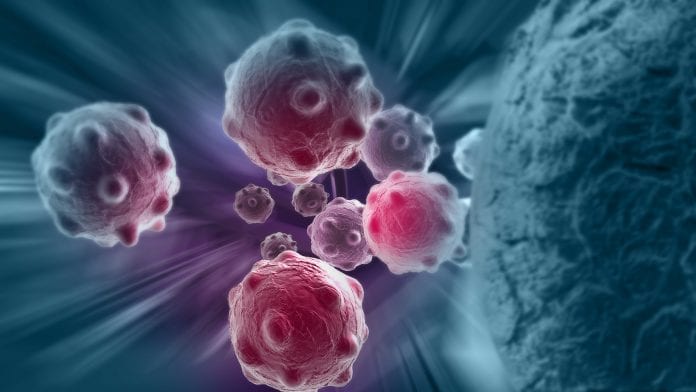
Scientists have demonstrated a potential new strategy for treating lymphomas – a group of cancers that start in infection-fighting cells called lymphocytes.
The team of scientists at Scripps Research have demonstrated the potential of a new treatment approach which uses natural cancer-targeting immune cells, known as ‘natural killer cells’, that have been modified to selectively target lymphoma. In their research, the modified natural killer cells brought about a dramatic reduction of lymphoma in a mouse model.
The study has been published in the journal Angewandte Chemie.
Creating a super-powered NK cell
Currently, existing lymphoma treatments such as B-cell-killing antibodies and CAR-T cell therapies work by targeting B cells indiscriminately, however, these treatments can cause side effects, such as immunosuppression due to low antibody levels.
Co-senior author Peng Wu, PhD, an associate professor in the Department of Molecular Medicine at Scripps Research, said: “We found a way to achieve selectivity in targeting lymphoma cells, which is an important departure from existing therapies.”
Wu and his lab collaborated in the study with the lab of co-senior author James Paulson, PhD, the Cecil H and Ida Green Professor and Chair of the Department of Molecular Medicine at Scripps Research, developing a more specific approach using natural killer cells (NK cells) which are immune cells that normally patrol the bloodstream and tissues, seeking and destroying virus-infected or cancerous cells. In the early 1990s, Canadian researchers developed a special type of NK cell, NK-92, from a patient with a rare NK-cell cancer, which scientists are able to grow and multiply in the lab, compared with normal NK cells found in human blood.
In this study Wu and his team used chemistry techniques to modify NK-92MI cells to concentrate their cancer-fighting power against lymphoma.
Fighting cancer
The scientists re-engineered NK-92MI cells to include a surface molecule that binds to a B-cell surface receptor called CD22, which is normally abundant on B-cell-derived lymphoma cells, meaning that, in principle, the NK-92MI cells would selectively recognise cancerous B cells.
In cell-culture tests, the modification brought a big improvement in the NK cells’ ability to kill lymphoma cells without harming healthy cells. In a mouse model of lymphoma, however, the strategy didn’t work because the NK cells did not go where they were needed.
“We found that after being injected, these NK cells tend to be found in the lungs and throughout the bloodstream, whereas in this mouse model and in human lymphoma patients, the lymphoma cells are mostly in the bone marrow,” Wu says.
The team then added to their NK cells a new molecule called Sialyl-Lewis X, which made the cells gather in bone marrow amid the lymphoma cells, leading to a dramatic delay in the development of lymphoma in the mice.
Wu and his lab now are continuing to develop this and related strategies for clinical use.







